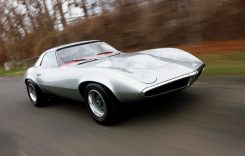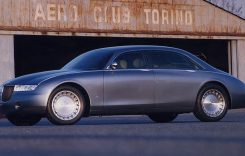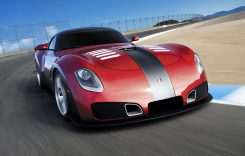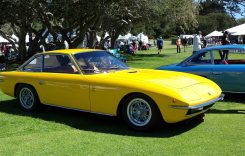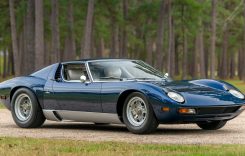Adam found it to be equally good, but because he also rode on the street his insight is not all-glowing. The fact that we had to threaten to shoot him with an animal tranquilizer dart to get him to get off the Hypermotard at the track is a testament to his feeling about the Ducati.

“The engine is the shining point of this motorcycle,” said Adam. “It makes power from a very low RPM and pulls hard and smooth all the way to redline. The engine is versatile enough for use in the city and in faster sections of the twisties, whereas the Buell doesn’t have the same power to get it through faster corner segments. The only place that the engine is a letdown is when traveling over triple digits because it simply starts to run out of steam.”
The final pieces of the puzzle lie in the overall performance of the chassis, suspension and braking components during track testing. On the scales the S-model Hypermotard weighs in at 431 lbs w/o fuel, compared to 448 lbs for the Super TT. Now, the standard Hypermotard does not come with the same forged wheels as the ‘S’ we were saddled with. One can only assume that standard hoops would bring the weights closer. An argument can be made that the lighter wheels give the Ducati a bit of advantage on the track so we thought it would be nice to get that point out there in the open. You might be making a fuss but the Buell isn’t asking for any excuses. It handles a tight track like Horsethief without too much complaint and you might recall Mr. Filice was a bit quicker on the TT.
Where the Hypermotard gets a leg up on the Super TT is in the suspension department. On paper the Hypermotard has an advantage with its Ohlins rear shock (rather than the Sachs shock offered on standard version) and the DLC coating on the fully-adjustable 50mm Marzocchi long-travel fork. The Ducati was easier to sort out and feels more supple on the track and street. The Super TT is equipped with a 43mm inverted Showa fork and Showa shock with the same range of adjustability but we never did feel like we got the most out of the TT suspenders at the track.
The Zero Torsion Load (ZTL) front brake system on the Super TT is anchored by a 375mm front brake attached to the inside circumference of the front wheel.
When anyone first approaches a modern Buell there is one component that grabs their attention, the ZTL (Zero Torsion Load) front brake system. With a single massive 375mm front brake attached to the inside circumference of the front wheel and impressive-looking six-piston caliper, it compels folks to stare, even if only for a moment. The principle behind the ZTL is good on paper but it doesn’t offer up the same type of feeling you get from the Hypermotard’s more-traditional pair of 305mm discs and radial-mount Brembo Monobloc 4-piston calipers. Both are powerful units, and while the ZTL design allows for a lighter wheel to be cast at the production level, the lack of feel seems to be the biggest complaint from our track testers when comparing the two. The Ducati takes the cake here with its combination of near-overkill braking power available from a single finger applied to the front brake lever and an uncanny level of feel that allows the Hypermotard to be pushed harder and trail-braked deeper into a turn than the Buell. That pays off in the end as confidence builds, allowing a Ducati rider to concentrate on gear selection and corner speed with less effort being spent on shifting and avoiding obstinate rev limiters.
So we have two bikes that are extremely similar despite being unlike anything else available on the market today. The Super TT is a testament to the success of Buell’s Trilogy of Tech that includes a low center of gravity afforded by its under-slung exhaust, fuel in frame/oil in the swing-arm and the ZTL front brake system all combined in a supernatural-look like something from Transformers – It is the Ying to Ducati’s classy Yang. The downside to the theory is the often-maligned H-D motor. It opens the Buell up to naysayers when all they experience are brief glimpses into the bike’s potential, whining from unappreciative journalists or a comment made on a forum somewhere from some random poster who took a Buell test ride and didn’t get their rocks off on it. Fortunately there is a growing contingent of riders who embrace the Buell way and once you do the same it makes more sense why this bike is what it is: Classic Buell.
The Buell Super TT has plenty of character, including under-slung exhaust that give it a low center of gravity, its fuel in the frame and oil in the swingarm system and its innovative ZTL front brake.
“Similarly to other Buell’s I’ve ridden, the Super TT is a very unique motorcycle. When compared directly to a European or Japanese motorcycle in the same class, initially it seems like a letdown. Everything the Super TT does is quirky. From the engine’s powerband, the handling, the unusual ZTL front brake, to the right-hand side belt drive, everything about the Super TT is different. But it’s funny, because the more saddle time you put in, the more those unusual, quirky traits turn into a distinctive personality that is unique and unlike any other manufacturer’s offering,” said Waheed.
Then we have the Hypermotard, the polar opposite of the Buell. Eerily similar in that they are both big-bore air-cooled V-Twins stuffed into tiny, aggressive chassis with long travel suspension and dirt bike-like riding positions, the Hypermotard gets to the same point with a more traditional and aesthetically appealing approach. The Ducati Hypermotard will run $13,995 for the S-model tested here or $11,495 for the base version, which is virtually indistinguishable from the ‘S’ save for some carbon fiber bits, while the Buell Super TT is the bargain of the test at $10,295.
The 2008 Ducati Hypermotard rode away with top honors and inspires plenty of wheel-lofting fun.
Despite that the Hypermotard 1100S motor isn’t quite as powerful as the Super TT in terms of peak output, it offers a more broad range of power for the rider to work with and is one of the critical areas that the Ducati bests the Buell. The Hypermotard chassis, suspension and brakes are nothing the public hasn’t seen before from Ducati, but in this combination it works better as a package than the TT. Throw into the equation that the Hypermotard design is a piece of rolling art and there is no denying that it is the Yang to the Buell’s Ying. In the end, the Ducati Hypermotard is our nomination in this contest for big-bore super motard supremacy. But there is no wrong choice. Both bikes are asphalt-shredding bad-asses. Just ask Jimmy.
